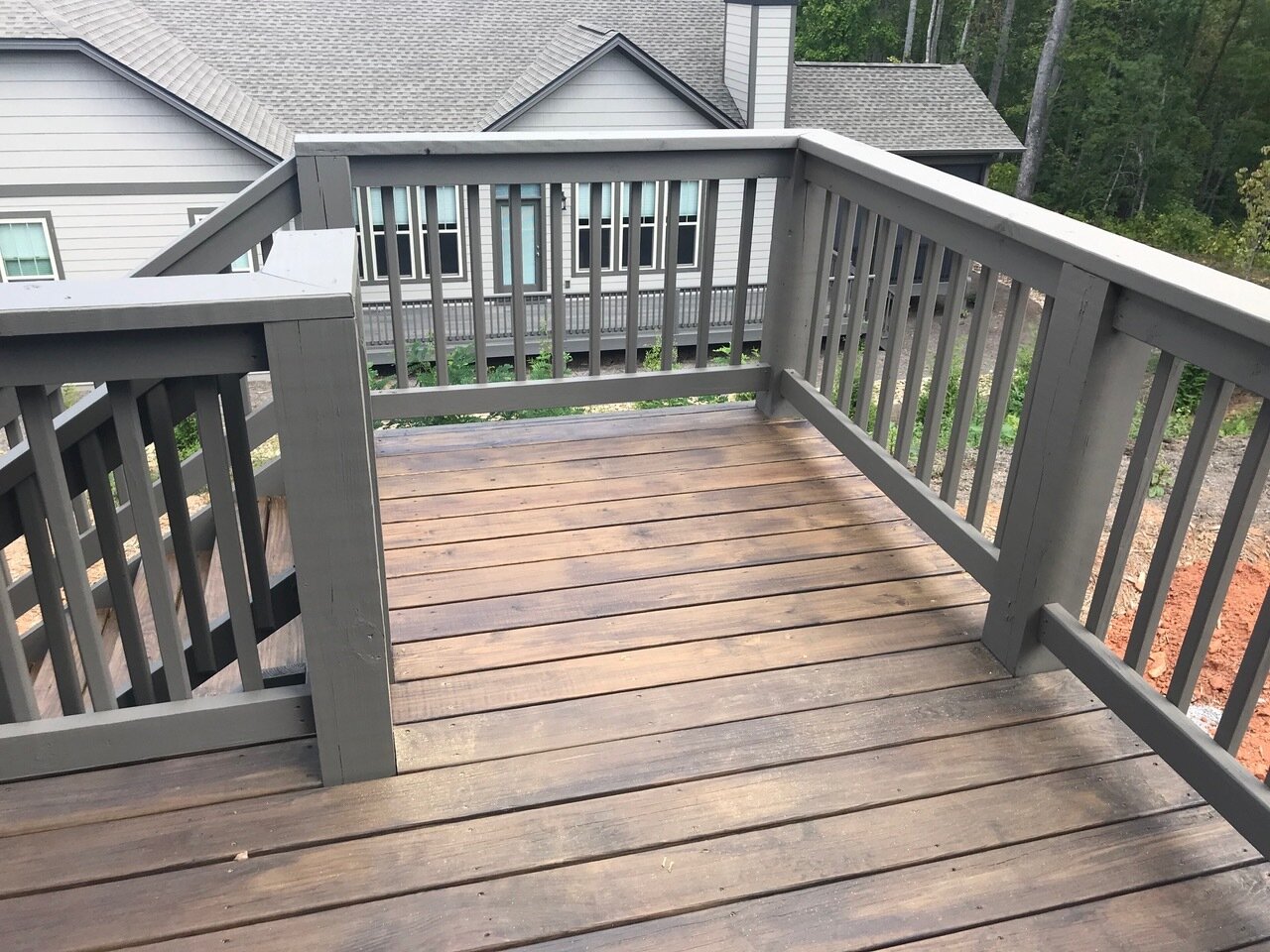Chicago Deck Staining Solutions: Specialist Results Ensured
Chicago Deck Staining Solutions: Specialist Results Ensured
Blog Article
A Comprehensive Guide to Different Kinds Of Deck Discoloration Techniques for Ultimate Security and Aesthetics
In the world of deck maintenance, the art of discoloring stands as a pivotal step towards both preserving the honesty of your exterior room and enhancing its visual allure. As we browse via the detailed globe of deck staining strategies, one starts to appreciate the nuanced methods that can make all the distinction in between a mediocre finish and a remarkable one.
Understanding Various Kinds Of Spots
Numerous types of stains are frequently used in the procedure of deck discoloration to attain different aesthetic and safety results. On the other hand, semi-transparent stains offer an equilibrium in between color enhancement and security, allowing some timber grain to show through.
Toners include a tip of shade to the wood while giving marginal security, making them ideal for more recent decks with much less wear. Recognizing the attributes and advantages of each type of stain is important for achieving the preferred appearance and durability for your deck.
Selecting the Right Discoloration Shade
When thinking about the appearances of your deck staining job, the option of discolor color plays a vital role in boosting the safety top qualities of the picked stain type (Beautiful Deck). The shade you pick can significantly influence the general look of your deck, as well as its capability to stand up to the elements gradually
When choosing a stain shade, it's important to consider the existing color design of your home's exterior. Integrating the deck stain with the total aesthetic of your home can produce a natural and aesthetically enticing outside space. Additionally, the color of your deck tarnish can influence the temperature level of the deck surface area; darker colors tend to take in even more warm, while lighter colors show sunshine and stay cooler.
In addition, the kind of wood you are tarnishing will additionally influence how the stain color appears. Various wood types can interact with the discolor in various means, possibly changing the last color. It's recommended to examine the tarnish on a small, low-profile area of the deck to guarantee the color turns out as wanted prior to proceeding with the entire task.
Preparing Your Deck for Discoloration
To make certain a effective and resilient deck discoloration job, thorough prep work of the deck surface area is essential. Begin by cleaning the deck completely to remove dust, gunk, mold, and any old tarnish or end up.
Inspect the deck for any type of harmed or rotten boards that need to be changed. Hammer down any kind of sticking Stain Deck out nails and sand any kind of harsh areas to make certain a smooth surface area for staining. Look for any loose barriers or steps that may need tightening up or fixing.
Once the deck is tidy, completely dry, and in good fixing, think about applying a timber brightener to recover the deck's natural shade and open the timber pores for better discolor penetration. Finally, protect any type of neighboring plants, furniture, or surfaces with plastic bed linen before proceeding with the staining process. Appropriate preparation is vital to attaining a professional-looking surface and taking full advantage of the long life of your deck stain.
Applying Discoloration With Various Techniques
For a specialist and remarkable finish, the method of using discolor plays an important role in improving the look and durability of your deck. There are several methods you can make use of to make certain an effective application of stain.
It is ideal for intricate locations and getting to in between deck boards. Back-brushing after rolling is suggested to also out the stain and function it right into the timber for far better penetration.
Spraying is an additional popular method, offering rate and simplicity of application, especially for huge deck areas. Whichever method you select, making certain correct prep work and following supplier standards will certainly help achieve a attractive and lasting tarnish coating on your deck.

Keeping and Re-staining Your Deck
When it comes to re-staining your deck, the frequency depends on different elements such as the kind of tarnish made use of, the climate in your location, and exactly how much wear and tear your deck experiences. Typically, it is advised to re-stain your deck every 2-4 years to maintain its defense and appearances.
Before re-staining, ensure the deck is clean, dry, and totally free of any previous tarnish residue. Sanding might be necessary to smooth out harsh areas or get rid of old discolor that is flaking. Select a premium stain that suits your deck's material and offers the wanted level of defense. Use the stain equally making use of the proper strategy reviewed earlier in this guide to ensure a resilient and beautiful surface - Right Deck Stain. By remaining positive with maintenance and re-staining, you can take pleasure in a aesthetically attractive and well-protected deck for many years ahead.
Conclusion
To conclude, recognizing the different sorts of deck spots, selecting the best shade, properly preparing the deck, applying tarnish with various methods, and preserving and re-staining the deck are necessary steps for ultimate defense and visual appeals. By complying with these steps, you can guarantee that your deck remains in leading condition for several years ahead.
In addition, the shade of your deck discolor can affect the temperature of the deck surface area; darker shades have a tendency to soak up even more warmth, while lighter colors mirror sunlight and remain cooler.
It's recommended to test the stain on a little, low-profile location of the deck to guarantee the color turns out as wanted before continuing with the entire task.

Report this page